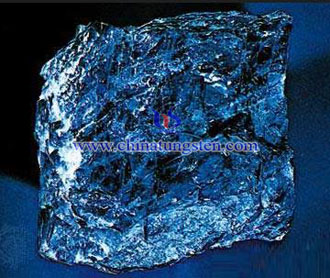Cordierite Tungsten Trioxide Denitration Catalyst
- Details
- Category: Tungsten Information
- Published on Wednesday, 30 March 2016 14:51
 The development of the catalyst is the core technology in the flue gas denitration systems. It is a good choice to take cordierite as a carrier for fully uses the active ingredient inside the catalyst. Cordierite honeycomb ceramic is widely used in oil and chemical industry as the economic carrier because of its excellent properties, such as: thermal shock resistance, low expansion, wear resistance, well adsorption and high mechanical strength.
The development of the catalyst is the core technology in the flue gas denitration systems. It is a good choice to take cordierite as a carrier for fully uses the active ingredient inside the catalyst. Cordierite honeycomb ceramic is widely used in oil and chemical industry as the economic carrier because of its excellent properties, such as: thermal shock resistance, low expansion, wear resistance, well adsorption and high mechanical strength.
The activity of cordierite tungsten trioxide denitration catalyst is mainly influenced by tungsten trioxide loaded and co-solvents. Some scholars believe that the tungsten oxide can inhibit the surface area lost which is caused by vanadium oxide, keeping a certain specific surface area, promoting catalyst activity. Experiments have shown that, tungsten trioxide can significantly improve the denitration catalyst activity.
As the SCR denitration reaction is carried out on the catalyst surface, the surface properties determine the denitration activity to a large extent. However, when adding the co-solvent, catalyst’s surface shows over dispersed, particularly the form of a monomer present in a majority; case without adding a co-solvent, the active component is easy to form a polymerization. According to reports, the polymerization of vanadium pentoxide easy to combine with water and form more acid sites, thus to improve the catalyst’s activity; but with the co-solvent added, highly fragmented of active ingredient is disadvantage to form acid sites, further leading to decrease the tungsten trioxide denitration catalyst activity.
| Tungsten Oxide Supplier: Chinatungsten Online www.tungsten-oxide.com | Tel.: 86 592 5129696; Fax: 86 592 5129797;Email:sales@chinatungsten.com |
| Tungsten News & Prices, 3G Version: http://3g.chinatungsten.com | Molybdenum News & Molybdenum Price: http://news.molybdenum.com.cn |